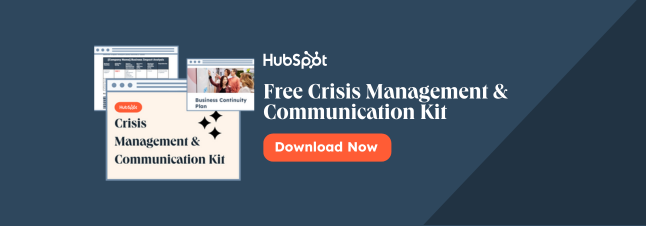You could spend every moment of every day anticipating all the things that could go wrong in your business, and you still wouldn’t think of all the possibilities… and you’d probably lose your mind.

From natural disasters like hurricanes and tornadoes that halt production or delivery to cybersecurity breaches that leave your trade secrets or your customer’s private information vulnerable, business is wrought with unforeseen challenges.
When these challenges arise, businesses may be unable to operate effectively, may have a PR disaster on their hands, or may have been shaken to their very core by a rogue employee. The ensuing financial disaster may be felt for years to come. In this piece, we’ll discuss business crisis performance so that when the inevitable occurs, your organization is better prepared to weather the coming storm.
What is crisis performance?
Crisis performance is how your business carries out its crisis management plan during a challenging period.
Knowing that something difficult will occur at some point in your business, it’s best to shift our focus to what we’ll do when it happens. A solid crisis management plan will mitigate the fallout and help your organization function throughout this period and beyond.
Improving Crisis Performance Management
While your crisis management plan should start well before a crisis ever occurs, we’re going to focus on improving performance during a crisis. These tips will help you calmly address the current situation in a manner that doesn’t damage your organization long term.
1. Focus and Remain Calm
While it’s tempting to curl into the fetal position and rock, your team, your customers, and your shareholders need you to think clearly during this time. First, identify the problem your organization is currently facing… then dig deeper. You’ll need to uncover the root cause of the issue in order to fix it. Once you have, you can use all of your available resources to right the problem.
2. Act Quickly… But Not Too Quickly
When a problem arises, it’s tempting to act immediately. After all, the world is waiting to see how you respond. While it’s important to demonstrate that you’re addressing the situation, you don’t want to do so from a place of fear or ignorance. Take a moment, take a breath, and take stock of the situation before you make a move. This will show that you have the situation under control and can be trusted during this time.
3. Embrace Adaptability
When a crisis hits, you likely won’t be presented with every piece of the puzzle. While you need to act quickly, you will have to adjust your plan as new information is presented. Flexibility is a hallmark of good leadership during this time and the better able you are to make the necessary changes, the less fallout your organization will experience.
4. Manage Expectations for your Team
No matter how well you hire, not everyone on your team will understand what happens in a crisis and know how to stay calm and be most useful to the cause.
As a leader, you’ll need to communicate with your team, calmly explaining what’s happening, what the plan is to work past it, how long it’s expected to last, and most importantly - what part they will play. When employees are given a task or responsibility, they’ll fare much better than if they are left to find their own way.
5. Communicate Honestly
While not every crisis will affect your customers or the general public, those that do must be disclosed. Trying to hide what has happened will only breed mistrust, damage your reputation, and destroy your customer base. Everyone makes mistakes.
Those who own up to them, apologize, and show that they are working to make amends, are the ones who will survive a crisis relatively unscathed. This holds true for addressing the public, as well as speaking with your board of directors or shareholders. Show them you’ve got things under control, or you may be replaced by a competitor.
Crisis Performance Metrics
PR legend Harold Burson said, “When a company is in crisis, I always gather the management team and ask them to explain the worst possible consequences of the problem. If we avoid the worst possible consequence, then that would be our success.”
Determining your success during a crisis is not always a subjective measurement, even though it may be difficult to quantify. The first challenge you’ll face is determining what aspects of your business a crisis has the potential to damage. Once you have that answer, you can decide what metrics you want to focus on.
For example, if your current crisis directly affects the public, whether it be their health and safety or merely their perception of your brand, your PR efforts will need to be quantified. Are your key messages reaching the intended audience? How has public opinion changed regarding your brand and your organization? How have their behaviors changed during this time?
Perhaps the crisis will impact internal operations more than anything else. If this is the case, your crisis performance metrics will be less around public opinion and will focus on how many of your internal processes are threatened or interrupted during this time.
Better Safe Than Sorry
No matter what challenges befall your organization, staying calm and thinking clearly, communicating properly, and accepting responsibility will go a long way to surviving the incident.
The best time to plan for a potential crisis is before it ever happens. If you don’t have a crisis management plan in place yet, there’s no better time than the present.


![De-Escalation Techniques: 30 Proven Strategies to Diffuse Tension and Build Trust [Expert Tips + Data]](https://www.hubspot.com/hubfs/de-escalation-techniques_2.webp)





![Social Media Crisis Management: Your Complete Guide [Free Template]](https://www.hubspot.com/hubfs/social-media-crisis-management-1-20241107-3106355.webp)

